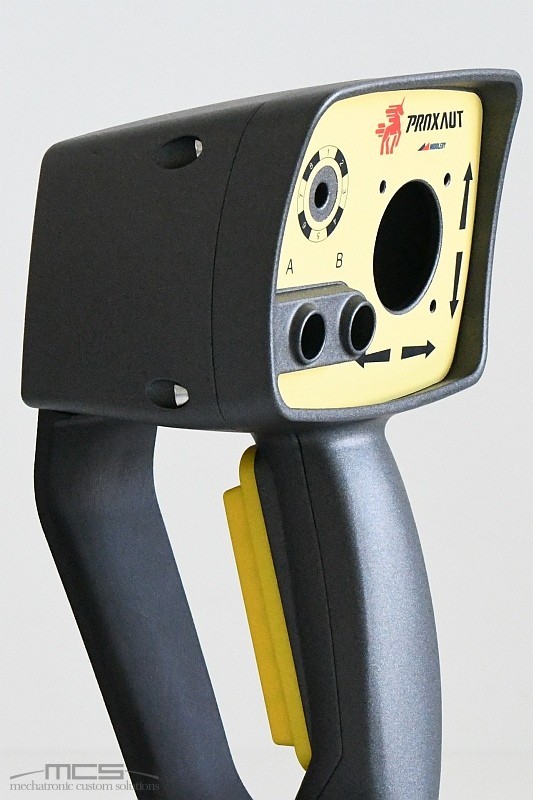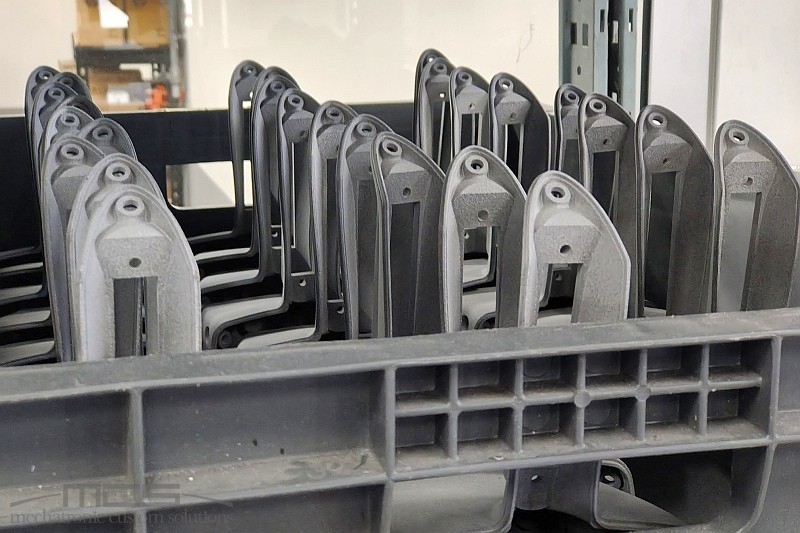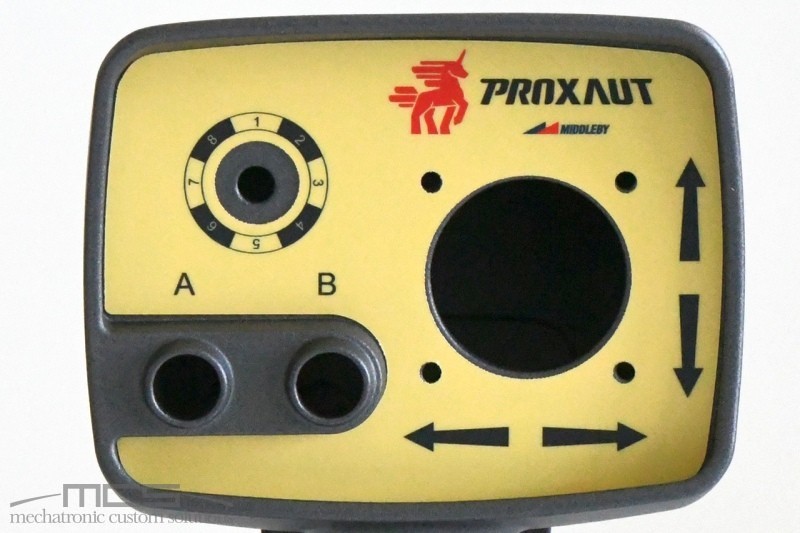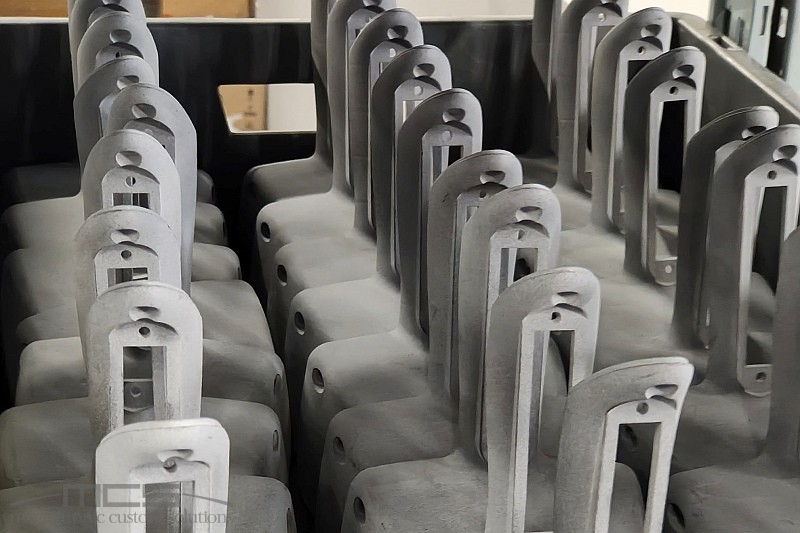In automated guided vehicles (AGV), the PDA (or control handwheel) must combine ergonomics, functionality, robustness and safety to allow the operator to manually control the vehicle efficiently and safely.
Factors such as the size, shape and position of the buttons, for example, are important for handling and usability.
In this post, we will examine a project realized for an Emilian company leader in the production of AGV vehicles, which required a custom-made solution for the handheld/ flyer used on its vehicles.
The customer challenges

To house the handheld controller for their AGVs – equipped with joysticks and function buttons – they were using a commercial electronics enclosure, the Pilot 120 model of Rose Systemtechnik. However, this solution presented several issues:
- Generic and unremarkable design
- Suboptimal dimensions and volumes for component placement (internal circuits, buttons, actuators, joystick).
- improved ergonomics.
In order to develop a proprietary, more attractive, and functional solution, the Emilian company was searching for a partner who can work with it.
Our proposal
The customer found us online, noticing a product conceptually similar to what they were looking for on our website. Right away, they realized that our expertise ranged from design to production.
In collaboration with the customer’s electronic designer, we created several preliminary drafts, arriving at a co-designed shape that not only met expectations but also improved assembly.
We also suggested colour combinations in line with the brand’s identity, which were validated by the customer’s marketing department.
The achieved solution

After creating a mockup, the final product was produced in a batch of 50 pieces and possesses the following characteristics:
- 3D print PA12 enclosure, composed of 2 half-shells finished with liquid anthracite metallic matt coating;
- Frontal polyester graphic overlay membrane created through digital printing.
- Arch with dual functionality: hand protection against impacts and wall attachment.
- Dedicated element for wall attachment.
Discarded solutions because not practicable
Given the small quantities involved, other proposals were also possible:
- Use and transformation of a commercial electronics enclosure: This is what the customer was already doing, but with little satisfaction in terms of design, ergonomics, and colors. Additionally, there were issues with the compatibility of the geometry with some new components to be integrated, such as the “dead man’s switch”.
- Machining from solid: This was not feasible in this case due to the size and shape.
- Plastic injection molding: This was not considered due to the high investment in molds (we’re talking about tens of thousands of euros) and constraints on minimum batches (hundreds of pieces). This solution certainly has a lower unit price but an extremely high cost in amortizing the specific equipment costs (the molds).
Why 3D Printing?
Therefore, given the limited production run (dozens of pieces per year, orders of 50 pieces per batch), we discarded other options as they would have required investments and minimum quantities incompatible with the client’s needs.
On the other hand, 3D printing technology proved to be the ideal choice because it:
- offers costs proportional to low quantities;
- allows the creation of functional objects;
- guarantees maximum freedom in shapes;
- does not require specific production equipment;
- allows for product revisions from batch to batch for restyling or technical-mechanical modifications.

Thanks to the adoption of 3D printing and a customization-driven approach, we have successfully turned the client’s vision into reality.
Starting with a careful analysis of technical, aesthetic, and functional requirements, we created a tailor-made solution that not only fully meets the specifications but also adds a touch of uniqueness and distinctiveness to the final product.
Text by MCS Marketing Department





